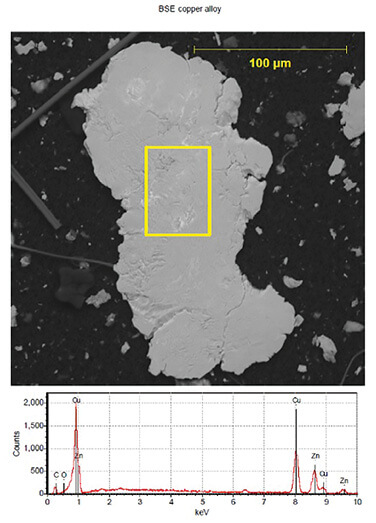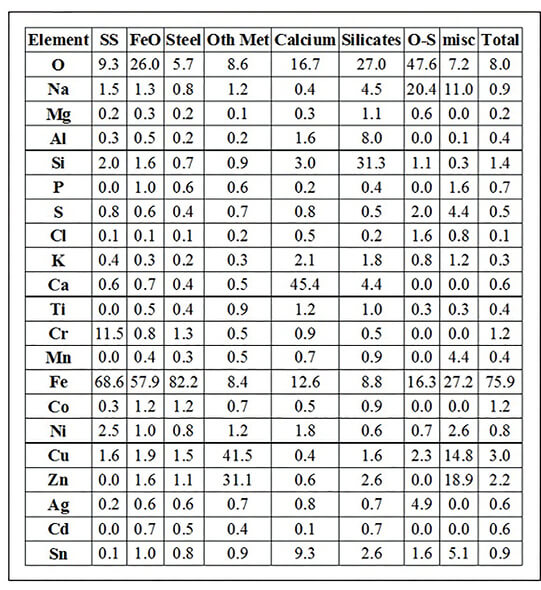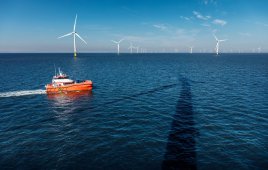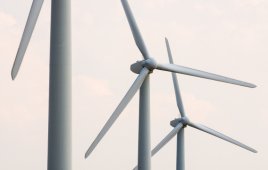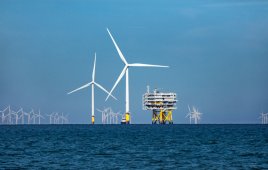This article is part of Windpower Engineering & Development’s April 2017 issue. A complete digital version of the issue is here.
Shawn Sheng / National Renewable Energy Laboratory
Don Roberts / DA Roberts LLC,
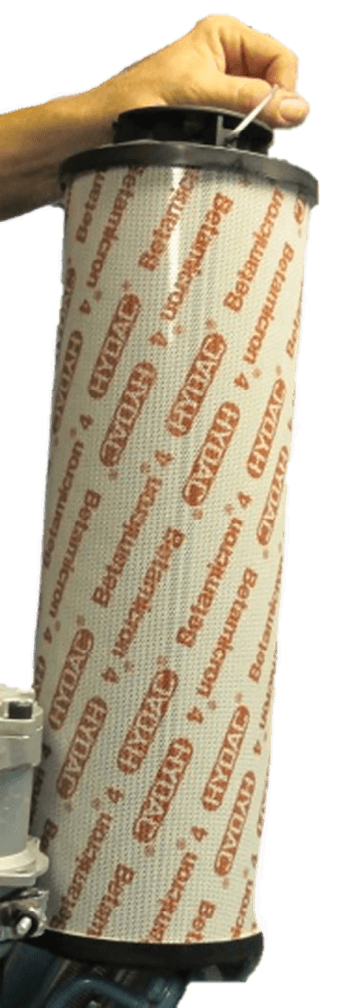 Filter debris analysis (FDA) is a condition-based monitoring tool used by industries to identify wear mechanisms in critical, oil-lubricated machinery. Often discarded during regular maintenance, the filter traps potentially valuable wear data that may not be collected or analyzed consistently using more standard, periodic oil analysis. Such analysis is good for trending oil deterioration. Using particles liberated from the filters, a laboratory can use several techniques, including a scanning electron microscope (SEM), to provide rapid, automated counting of large wear particles into size bins and classification by elemental composition.
Filter debris analysis (FDA) is a condition-based monitoring tool used by industries to identify wear mechanisms in critical, oil-lubricated machinery. Often discarded during regular maintenance, the filter traps potentially valuable wear data that may not be collected or analyzed consistently using more standard, periodic oil analysis. Such analysis is good for trending oil deterioration. Using particles liberated from the filters, a laboratory can use several techniques, including a scanning electron microscope (SEM), to provide rapid, automated counting of large wear particles into size bins and classification by elemental composition.
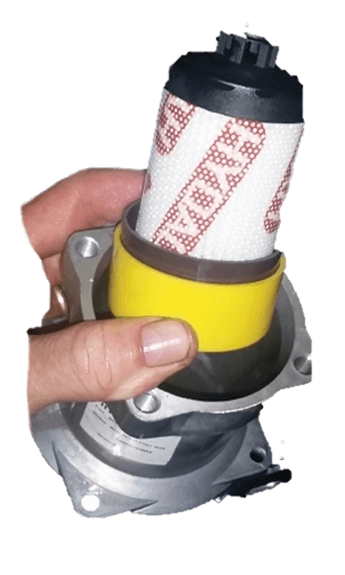
A compact filter (above) installed and the conventional element provide a size comparison.
Photos by Don Roberts
FDA is not currently a standard condition monitoring tool used in the wind industry. Utility-scale wind turbines have large gearbox oil filters, typically 15 to 30 in. (400 to 800 mm) in height, weighing 10 to 20 lb (4 to 9 kg). Because of the large filter’s size, costs of logistics and analysis are barriers to regular use of FDA. Thus, researchers from the National Wind Technology Center at the National Renewable Energy Laboratory conducted a test program with Hydac Technology Corporation and SGS Herguth Laboratories, Inc. to overcome these barriers as part of the Drivetrain Reliability Collaborative (formerly known as the Gearbox Reliability Collaborative).
The accompanying photos show one possible, cost-effective solution under field test. A side-stream filter consisting of off-the-shelf hardware supplied by Hydac uses a small version of the standard main gear-oil filter and would draw oil from a sample port upstream of the main gear oil loop. Logistics and analysis costs for the compact filter are significantly lower than for the large filter, with a potential payback within a few years in comparison with periodic large filter FDA.
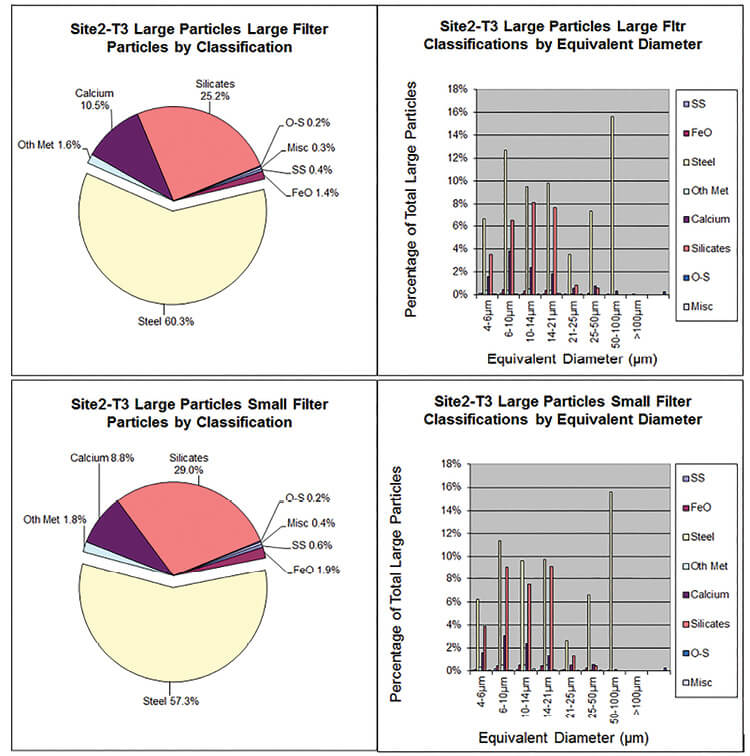
SEM analysis results are for the main gear oil filter (top two), and the compact filter (lower two). Source: SGS Herguth
Field tests were conducted on nine, megawatt-class wind turbines from July 2015 through December 2016. Laboratory analysis demonstrated successful hardware operation and SEM particle classification for the main and compact filters, as shown in the pie and bar charts. The charts show good correlation obtained from one test turbine between the main gear oil and compact filters with respect to particle size and classification. One source of data variation between the main and compact filters during the field trial was the preparation method of SEM patches for small and large filters caused by the more difficult handling of the large filter; therefore, another advantage of the compact filter is more consistent sample preparation.
Example of SEM classification rules (SGS Herguth)
 As part of the analysis specification, classification rules are established, as shown in the table Example of SEM classification rules.
As part of the analysis specification, classification rules are established, as shown in the table Example of SEM classification rules.
The classification rules provide an instruction set for the SEM to bin particles by composition using an energy-dispersive spectrometer (EDS) to evaluate the particles as shown in the photo below.
The tables, Elemental concentrations and size, show their SEM classification. The data can identify specific wear components such as the bearings, gears, or wear mechanisms involved, such as sliding or cutting to further inform corrective maintenance.
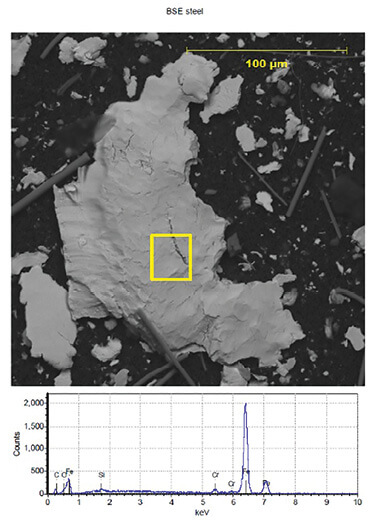 What is the benefit of filter collection and classification over standard oil analysis? The filter can provide a more consistent collection of particles over time between periodic maintenance intervals. Oil-analysis samples collected at a discrete moment in time limits the quality of the data by the quality of the sample. For example, samples collected on cold, settled oil will not have a representative particle distribution. And warm samples are collected about 20 min. after the turbine stops because of the time it takes to climb an 80 to 100-m tower. The table Oil analysis tests presents a matrix of common wind turbine gear oil analyses that summarizes limitations for gearbox health monitoring in comparison with FDA.
What is the benefit of filter collection and classification over standard oil analysis? The filter can provide a more consistent collection of particles over time between periodic maintenance intervals. Oil-analysis samples collected at a discrete moment in time limits the quality of the data by the quality of the sample. For example, samples collected on cold, settled oil will not have a representative particle distribution. And warm samples are collected about 20 min. after the turbine stops because of the time it takes to climb an 80 to 100-m tower. The table Oil analysis tests presents a matrix of common wind turbine gear oil analyses that summarizes limitations for gearbox health monitoring in comparison with FDA.
Oil analysis tests
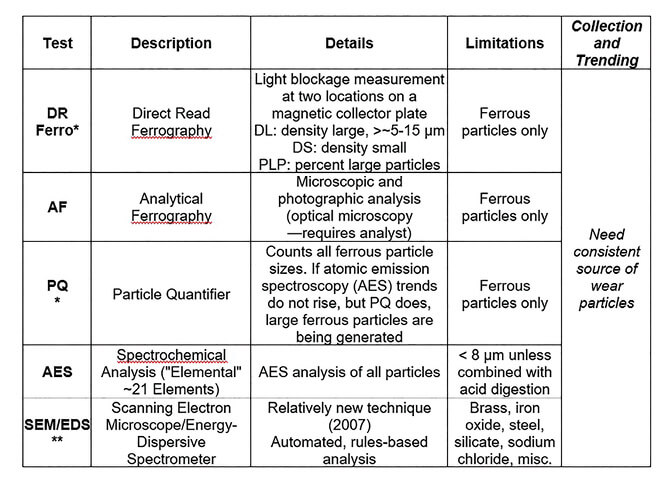
References: *Matt Spurlock, Practicing Oil Analysis (11/2006), **Guy Nadeau, William R. Herguth, Applying SEM-EDS to Practical Tribology Problems, Herguth Laboratories, Inc., Practicing Oil Analysis (7/2004)
Using filter particle counts, sizes, and classification, outliers on a wind project can be identified for additional monitoring or maintenance.
Elemental concentrations and size
FDA may be most beneficial for some wind projects that do not already collect or monitor wear particles. Successful alternative traps include magnets and online chip detectors to collect ferrous wear particles, and filter baskets located under the filter elements, which collect ferrous and nonferrous particles.
Performing online wear particle and vibration monitoring could be the next logical steps for a staged implementation of more expensive online condition-based monitoring after FDA screening has identified a need for more frequent monitoring.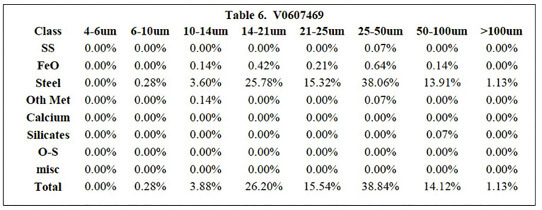
The research demonstrates FDA has distinct advantages over oil analysis and may fit a key niche between oil analysis and more expensive online condition monitoring systems.
Filed Under: Filters, O&M



